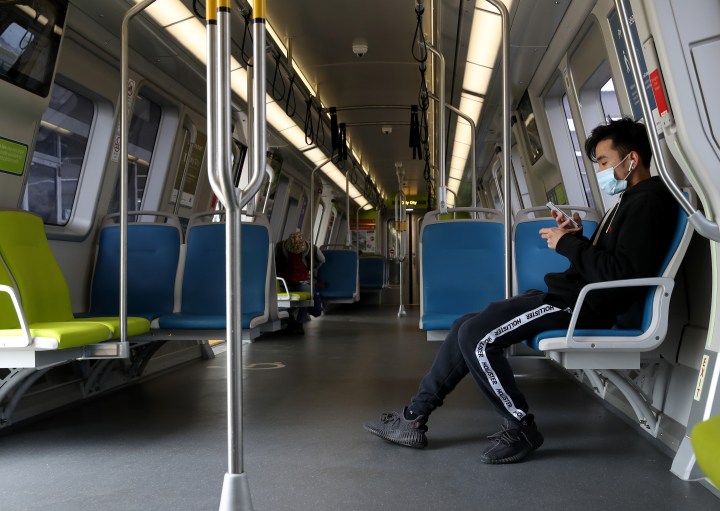
Public transit ridership is slow to return, despite high gas prices
Public transit ridership is slow to return, despite high gas prices

The record inflation we’ve been talking about is fueled partly by sky-high gasoline prices.
When they started to spike back in March, some public transit managers and advocates saw it as an opportunity. They hoped high prices at the pump would nudge some of us onto city buses and trains and help transit ridership recover from the nosedive it took during the pandemic.
But that hasn’t quite panned out.
Before the pandemic, San Francisco’s BART trains carried about 400,000 people a day during the workweek.
That number has plummeted.
“We are carrying about 30 to 35% of the ridership that we did before March 2020,” said BART spokesperson Chris Filippi.
That’s up slightly from the start of the year, he said, but it’s hard to say whether gas prices have anything to do with it.
“We’re in different times now,” Filippi said. “So we can’t really make that correlation.”
That’s true across the country, said Stephen Miller with the Transit app.
He said transit systems were designed around once-predictable commuter habits that are now in flux.
“There’s a lot more remote work and hybrid work,” Miller said. “People aren’t using public transit as regularly.”
Even with a slight boost from inflation, Miller said, most U.S. systems are serving half of their pre-pandemic ridership.
So how are they staying afloat?
“Federal aid has been really helpful for transit agencies,” Miller said.
Like the one in Kansas City, Missouri. Deputy CEO Jameson Auten said pandemic aid helped fund a zero-fare program for the city’s buses.
“So you get on our bus and you just sit down,” he said. “You can even keep the $1.50 besides saving the gas money as well.”
Auten credits that program with keeping ridership above the national average, around 80% of pre-pandemic levels.
But that aid is finite, said Robert Puentes, who runs the Eno Center for Transportation in Washington, and agencies need to get creative to prove their value before it runs out.
He said there’s “an awful lot” transit agencies can do to recapture riders and replace lost commuters.
“But it’s getting late early, and they’re gonna need to start moving pretty quickly before these fiscal cliffs start to happen,” Puentes said.
Before dips in ridership lead to budget cuts, that is.
There’s a lot happening in the world. Through it all, Marketplace is here for you.
You rely on Marketplace to break down the world’s events and tell you how it affects you in a fact-based, approachable way. We rely on your financial support to keep making that possible.
Your donation today powers the independent journalism that you rely on. For just $5/month, you can help sustain Marketplace so we can keep reporting on the things that matter to you.











